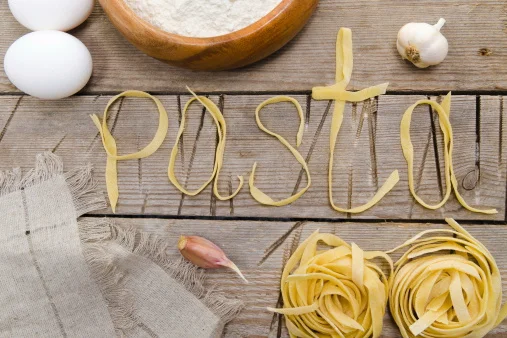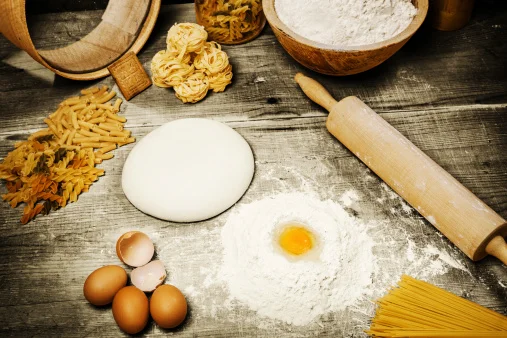Pasta is made from wheat flour.
Flour, eggs and water are mixed together to make it a dough.
The dough is cut in different ways to make long strips.
Some pasta is cut in circles and wrapped around a filling.
Pasta is dropped into boiling water to cook quickly.
© iStock images
The history of pasta
There are many different stories about the beginnings of pasta.
A popular story is that the explorer Marco Polo was introduced to noodles during his travels in China, and that he brought the recipe back to Italy in 1292.
In the Middle Ages pasta was eaten by the Arabs who ruled Sicily at the time.
It is also believed that the ancient Romans in the 1st century AD ate pasta and that ancient Greeks ate a version of lasagne.
Whatever the real story is, pasta is certainly an ancient food. There are variations of pasta in the western world and in Asian countries.
Originally pasta was eaten freshly made, but it was soon discovered that it could be dried and stored, which was useful for long sea voyages.
Durum wheat
Ingredients for making pasta: eggs, flour, and maybe just a little olive oil. © Getty Images
Pasta did not become an important part of a meal in Italy until the 16th century. It was a luxury item because the special durum wheat needed had to be imported from Sicily or Puglia, which made it expensive. Until the 18th century, poorer people in Italy ate mainly vegetables.
At this time the concept of large farms took hold, which led to more widespread cultivation of durum wheat. This, combined with the development of a kneading machine and press, meant there could be factory production of pasta. At last pasta became part of the daily diet in Italy, and even poor people could afford it.
Around 1770, macaroni (a type of pasta) became popular in England, so much so that the word macaroni was used to describe anything really good 'That's macaroni!' The English at that time had colonies in America, and so macaroni made its way there.
Pasta today
Pasta comes in many shapes and colours. ©iStock
Today, pasta manufacture is very advanced, and machines have been invented for all parts of the process.
The two basic ingredients are flour, egg and water. The best pasta is made from durum wheat, specially grown for pasta. Sometimes it is combined with semolina, which is from the middle part of wheat grains. Sometimes spinach or tomato is added to the dough to add flavour and colour.
Pasta comes in many shapes and is a popular meal.©iStock
Pasta is popular all over the world, but it is the Italians who love pasta most. For nearly 400 years they kept the recipe secret, and developed over 300 shapes and a huge number of recipes.
Did you know?
#There is a museum of pasta: the Museo Storico Degli Spaghetti in Pontedassio, Italy.
#There are about 600 shapes and types of pasta.
#When people first ate pasta it was without tomato sauce. Tomatoes didn’t arrive in Europe until the 1500, when they were brought from Mexico by Spanish explorer Cortez.
#Italians eat the most pasta
Watch a video about how to make simple pasta at home:
http://thekidshouldseethis.com/post/fresh-homemade-pasta-made-simply-recipe





